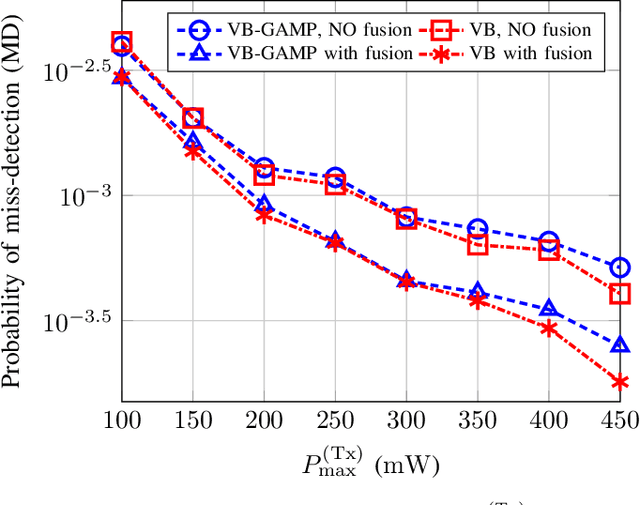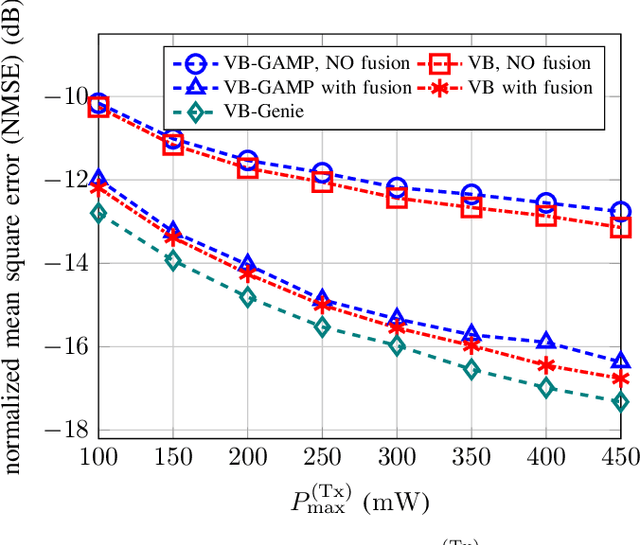Erik G. Larsson
Sherman
DeMuon: A Decentralized Muon for Matrix Optimization over Graphs
Oct 01, 2025Abstract:In this paper, we propose DeMuon, a method for decentralized matrix optimization over a given communication topology. DeMuon incorporates matrix orthogonalization via Newton-Schulz iterations-a technique inherited from its centralized predecessor, Muon-and employs gradient tracking to mitigate heterogeneity among local functions. Under heavy-tailed noise conditions and additional mild assumptions, we establish the iteration complexity of DeMuon for reaching an approximate stochastic stationary point. This complexity result matches the best-known complexity bounds of centralized algorithms in terms of dependence on the target tolerance. To the best of our knowledge, DeMuon is the first direct extension of Muon to decentralized optimization over graphs with provable complexity guarantees. We conduct preliminary numerical experiments on decentralized transformer pretraining over graphs with varying degrees of connectivity. Our numerical results demonstrate a clear margin of improvement of DeMuon over other popular decentralized algorithms across different network topologies.
Industrial Viewpoints on RAN Technologies for 6G
Aug 11, 2025Abstract:6G standardization is to start imminently, with commercial deployments expected before 2030. Its technical components and performance requirements are the focus of this article. Our emphasis is on the 6G radio access, especially MIMO, AI, waveforms, coding, signal constellations and integration with non-terrestrial networks. Whilst standardization has not yet formally started, the scope of the 6G study items has been defined. Our predictions in this paper are speculative as there are no results of the study yet, but our views are guided by implementation and deployment aspects. We expect that the views here will guide researchers and industry practitioners.
Breaking the TDD Flow for Over-the-Air Phase Synchronization in Distributed Antenna Systems
Apr 15, 2025Abstract:Phase synchronization between distributed antenna arrays requires measurements that break the standard time-division duplex (TDD) operation. We present a feasibility study on implementing such synchronization and analyze its impact on the quality of service. Considering two antenna arrays with independent local oscillators (LOs), we propose a modified TDD flow to accommodate the transmission of phase synchronization signals, formulate the phase estimation and compensation problem, and derive the achievable downlink spectral efficiency (SE). Numerical results show that frequent re-estimation of the interarray phase disparity is essential for maximizing SE in systems with low-quality LOs. Furthermore, applying a Kalman filter for phase tracking substantially improves the SE, especially if phase estimation errors are large compared to LOs phase drifts.
Robust and Efficient Average Consensus with Non-Coherent Over-the-Air Aggregation
Apr 08, 2025Abstract:Non-coherent over-the-air (OTA) computation has garnered increasing attention for its advantages in facilitating information aggregation among distributed agents in resource-constrained networks without requiring precise channel estimation. A promising application scenario of this method is distributed average consensus in wireless multi-agent systems. However, in such scenario, non-coherent interference from concurrent OTA transmissions can introduce bias in the consensus value. To address this issue, we develop a robust distributed average consensus algorithm by formulating the consensus problem as a distributed optimization problem. Using decentralized projected gradient descent (D-PGD), our proposed algorithm can achieve unbiased mean square average consensus even in the presence of non-coherent interference and noise. Additionally, we implement transmit power control and receive scaling mechanisms to further accelerate convergence. Simulation results demonstrate that our method can significantly enhance the convergence speed of the D-PGD algorithm for OTA average consensus without compromising accuracy.
Impact of Network-Controlled Repeaters in Integrated Sensing and Communication Systems
Mar 26, 2025Abstract:Integrating sensing capabilities into existing massive MIMO communication networks has become crucial, stemming from a need for a more interconnected society. Improved coverage and performance can be obtained by incorporating new network components, such as reconfigurable intelligent surfaces or network-controlled repeaters (NCR). Integrating such components into modern networks brings a number of challenges. Thus, this paper contributes with the analysis of NCR impact in integrated sensing and communication networks. Particularly, the Cram\'er-Rao bound for a range estimator is derived where the interference from the repeater is taken into consideration. Additionally, a joint procedure for determining the repeater amplification factor, along with the precoders of the transmitting access point, is proposed.
Unified Analysis of Decentralized Gradient Descent: a Contraction Mapping Framework
Mar 18, 2025Abstract:The decentralized gradient descent (DGD) algorithm, and its sibling, diffusion, are workhorses in decentralized machine learning, distributed inference and estimation, and multi-agent coordination. We propose a novel, principled framework for the analysis of DGD and diffusion for strongly convex, smooth objectives, and arbitrary undirected topologies, using contraction mappings coupled with a result called the mean Hessian theorem (MHT). The use of these tools yields tight convergence bounds, both in the noise-free and noisy regimes. While these bounds are qualitatively similar to results found in the literature, our approach using contractions together with the MHT decouples the algorithm dynamics (how quickly the algorithm converges to its fixed point) from its asymptotic convergence properties (how far the fixed point is from the global optimum). This yields a simple, intuitive analysis that is accessible to a broader audience. Extensions are provided to multiple local gradient updates, time-varying step sizes, noisy gradients (stochastic DGD and diffusion), communication noise, and random topologies.
Physically Large Apertures for Wireless Power Transfer: Performance and Regulatory Aspects
Mar 09, 2025Abstract:Wireless power transfer (WPT) is a promising service for the Internet of Things, providing a cost-effective and sustainable solution to deploy so-called energy-neutral devices on a massive scale. The power received at the device side decays rapidly with the distance from a conventional transmit antenna with a physically small aperture. New opportunities arise from the transition from conventional far-field beamforming to near-field beam focusing. We argue that a "physically large" aperture, i.e., large w.r.t. the distance to the receiver, enables a power budget that remains practically independent of distance. Distance-dependent array gain patterns allow focusing the power density maximum precisely at the device location, while reducing the power density near the infrastructure. The physical aperture size is a key resource in enabling efficient yet regulatory-compliant WPT. We use real-world measurements to demonstrate that a regulatory-compliant system operating at sub-10GHz frequencies can increase the power received at the device into the milliwatt range. Our empirical demonstration shows that power-optimal near-field beam focusing inherently exploits multipath propagation, yielding both increased WPT efficiency and improved human exposure safety in real-world scenarios.
Whisper D-SGD: Correlated Noise Across Agents for Differentially Private Decentralized Learning
Jan 24, 2025


Abstract:Decentralized learning enables distributed agents to train a shared machine learning model through local computation and peer-to-peer communication. Although each agent retains its dataset locally, the communication of local models can still expose private information to adversaries. To mitigate these threats, local differential privacy (LDP) injects independent noise per agent, but it suffers a larger utility gap than central differential privacy (CDP). We introduce Whisper D-SGD, a novel covariance-based approach that generates correlated privacy noise across agents, unifying several state-of-the-art methods as special cases. By leveraging network topology and mixing weights, Whisper D-SGD optimizes the noise covariance to achieve network-wide noise cancellation. Experimental results show that Whisper D-SGD cancels more noise than existing pairwise-correlation schemes, substantially narrowing the CDP-LDP gap and improving model performance under the same privacy guarantees.
A Flexible Framework for Grant-Free Random Access in Cell-Free Massive MIMO Systems
Nov 14, 2024

Abstract:We propose a novel generalized framework for grant-free random-access (GFRA) in cell-free massive multiple input multiple-output systems where multiple geographically separated access points (APs) or base stations (BSs) aim to detect sporadically active user-equipment (UEs). Unlike a conventional architecture in which all the active UEs transmit their signature or pilot sequences of equal length, we admit a flexible pilot length for each UE, which also enables a seamless integration into conventional grant-based wireless systems. We formulate the joint UE activity detection and the distributed channel estimation as a sparse support and signal recovery problem, and describe a Bayesian learning procedure to solve it. We develop a scheme to fuse the posterior statistics of the latent variables inferred by each AP to jointly detect the UEs' activities, and utilize them to further refine the channel estimates. In addition, we allude to an interesting point which enables this flexible GFRA framework to encode the information bits from the active UEs. We numerically evaluate the normalized mean square error and the probability of miss-detection performances obtained by the Bayesian algorithm and show that the latent-variable fusion enhances the detection and the channel estimation performances by a large margin. We also benchmark against a genie-aided algorithm which has a prior knowledge of the UEs' activities.
Reducing Dynamic Range in Bistatic Backscatter Communication via Beamforming Design
Nov 13, 2024



Abstract:Considering the exponential growth of Internet-of-Things devices and the goals toward sustainable networks, the complexity should be focused on the infrastructure side. For a massive number of passive devices, backscatter communication (BC) is a promising technology that reduces cost and increases energy efficiency by enabling transmitting information by backscattering radio frequency signals. Two main limitations that restrict the performance of BC are the round-trip path loss effect and the direct link interference (DLI) from the carrier emitter (CE). To circumvent this, we propose a novel transmit beamforming design for a multiple antenna bistatic BC (BiBC) system that realizes both purposes: mitigation of the DLI and increasing the power towards the backscatter device (BD). Additionally, we provide a detector design and the performance is evaluated in terms of the probability of error, for which we also provide a closed-form expression. Finally, simulation results show the superiority of the proposed beamforming design in decreasing DLI over a benchmark scenario that considers maximum-ratio transmission.
 Add to Chrome
Add to Chrome Add to Firefox
Add to Firefox Add to Edge
Add to Edge